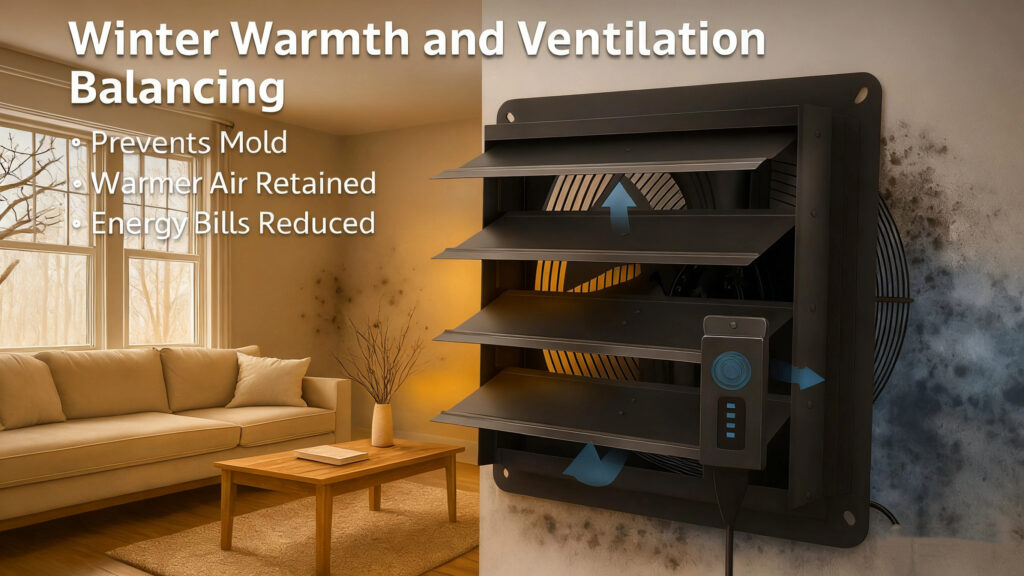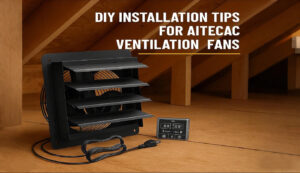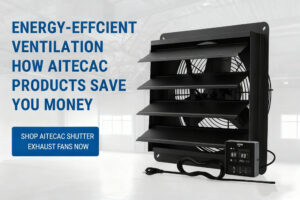Winter ventilation is essential to prevent mold and reduce heat loss. While winter feels warm and cozy, the long nights and cold winds bring challenges for homeowners. Winter ventilation mold prevention is important because the biggest issue is balancing heat retention with proper airflow. Without fresh air circulation, condensation builds up, leading to dampness and mold growth.
If ventilation is ignored, mold is a silent invader that can damage property, trigger allergies and compromise indoor air quality. If windows and vents are left open for airflow, heat escapes and energy bills soar. The solution lies in finding a balance between warmth and ventilation. This article will show you how to prevent mold growth in winter while reducing heat loss, with practical tips and long term solutions.
Why Winter Ventilation Is Important
During winter, most households depend on thick insulation and tightly sealed spaces. While these methods reduce heating costs, they also limit the natural exchange of indoor and outdoor air. Without ventilation, homes retain more moisture from daily activities such as cooking, bathing, drying clothes or even breathing.
This trapped moisture settles in cooler spaces such as basements. Because basements are below ground level, they have less airflow and colder surfaces making them perfect environments for mold spores to grow.
Poor ventilation doesn’t just affect homes. Commercial buildings and industrial spaces are also vulnerable. Warehouses, storage areas and workshops experience the same trapped moisture which can damage equipment and inventory if left unaddressed. Simply put, ventilation is not optional in winter, it’s mandatory.
The Heat Loss vs Ventilation Dilemma
Ventilation solves humidity problems but introduces another issue: heat loss. Every time warm air is expelled, cold air enters and heating systems have to work harder. This tug of war between comfort and efficiency frustrates many homeowners and business operators.
Traditional ventilation methods such as leaving a window open are not practical during freezing months. They waste energy and increase heating bills. Avoiding ventilation can cause poor air quality and unhealthy conditions. The solution is finding controlled ventilation that allows airflow without losing too much heat.
Mold Growth in Winter
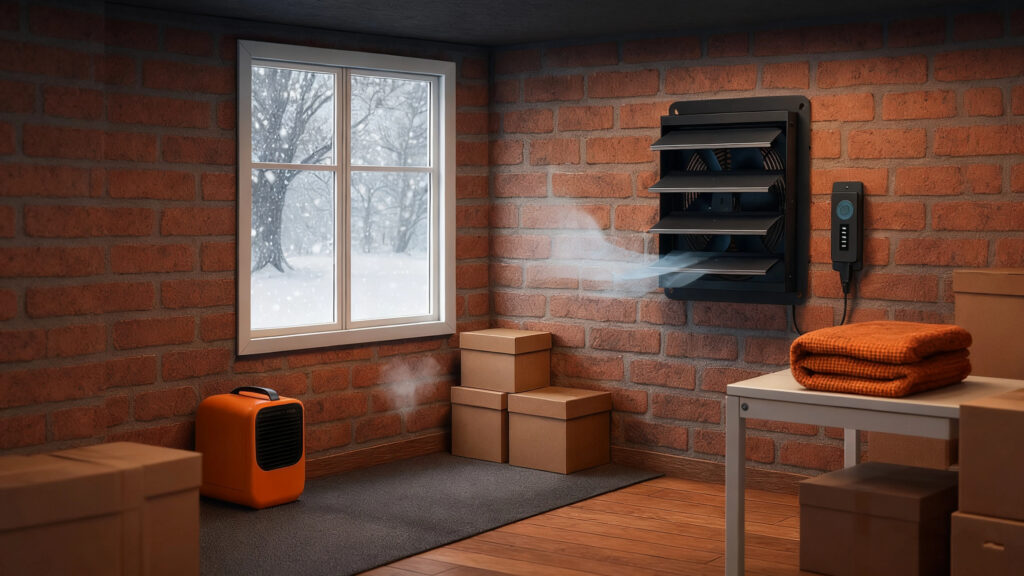
Mold doesn’t stop growing just because it’s cold. In fact, winter conditions create some of the worst scenarios for indoor mold.
Mold grows when three conditions are met:
- Moisture – from condensation, leaks or humid air.
- Stagnant Air – no circulation to dry damp spots.
- Organic Material – wood, drywall or fabric surfaces.
Basements are particularly at risk because they provide all three conditions. Concrete walls absorb moisture from the soil outside while limited airflow keeps humidity high. Cold surfaces then trigger condensation leaving behind damp patches that mold quickly colonizes.
The consequences can be serious. Mold damages furniture, walls and flooring. Worse, it triggers allergies, asthma and other respiratory problems. Families and businesses both face risks when mold is left unchecked.
Balancing Heat Retention with Ventilation
The challenge is clear: how do you allow enough airflow to prevent mold without losing heat? The answer lies in a balance of insulation and controlled ventilation.
1. Insulation: Insulate walls, windows and doors to reduce heat loss. Proper insulation ensures fresh air circulation doesn’t result in energy waste.
2. Controlled Airflow: Instead of leaving windows open, use exhaust fans and ventilation systems designed for energy efficiency. These systems let stale, humid air escape while minimizing heat loss.
3. Smart Ventilation Strategies:
- Ventilate during the warmest part of the day.
- Direct airflow from damp areas like basements to outside.
- Use shutters or backdraft dampers that close when the fan is not running to keep heat indoors.
A real-world example: compare two basements. One is sealed tight with no ventilation. It feels warm but quickly grows damp and moldy. The other has controlled ventilation with an exhaust fan. It stays dry, mold-free and still warm enough for storage or living use.

Role of Ventilation Fans in Winter
Ventilation fans play a crucial role in maintaining fresh indoor air while minimizing heat loss. Modern fans are designed to balance airflow and energy savings.
The 576 CFM Shutter Exhaust Ventilation Fan is an excellent example. It’s powerful enough to move large volumes of air making it perfect for basements, workshops or other enclosed areas.
Benefits of Using This Fan:
- High Airflow: At 576 CFM, it removes damp, stale air quickly.
- Energy Efficiency: Shutter design prevents backflow, reduces heat loss when fan is off.
- Durability: Built for commercial and residential use, can run continuously.
- Automatic Shutters: Open when running, close when off, keep warm air inside.
By using this fan, you can prevent mold growth and still have indoor warmth. It’s a solution that saves energy and health.
Homeowners & Businesses Tips
Here are steps to balance warmth and ventilation this winter:
1. Use Dehumidifiers in High-Moisture Areas
A dehumidifier in your basement or storage room reduces overall humidity and prevents mold from growing.
2. Install Exhaust Fans Where Needed
Exhaust fans in kitchens, bathrooms and basements to manage moisture at source. For larger areas consider 576 CFM Shutter Exhaust Ventilation Fan for higher airflow needs.
3. Seal Leaks but Allow Controlled Airflow
Seal cracks and leaks that allow uncontrolled drafts, but ensure mechanical ventilation provides steady controlled airflow.
4. Add Smart Controls
Timers and humidity sensors to ensure fans only run when necessary. This prevents wasted energy and keeps humidity in check.
5. Maintain a Healthy Balance
Don’t over-ventilate or under-ventilate. The right balance ensures comfort, savings and protection from mold.
Why Choose Us
Not all ventilation fans are created equal. Many lose heat or are too weak to control humidity. Aitecac products including the 576 CFM Shutter Exhaust Ventilation Fan, are designed with both energy efficiency and effectiveness in mind.
- Durability: Our fans are built with commercial and industrial standards in mind, meaning they last longer and perform better.
- Energy Efficiency: Designed to move large volumes of air with minimal power consumption.
- Better Design: Shutter design prevents heat loss when the fan is not running.
- Customer-Centric: Our products solve real problems mold prevention, air quality and energy savings, without adding unnecessary complexity.
That’s why customers trust us. Whether you’re securing a damp basement, protecting equipment in a workshop or ensuring a healthy indoor environment for your family, our products provide the right balance between warmth and ventilation.
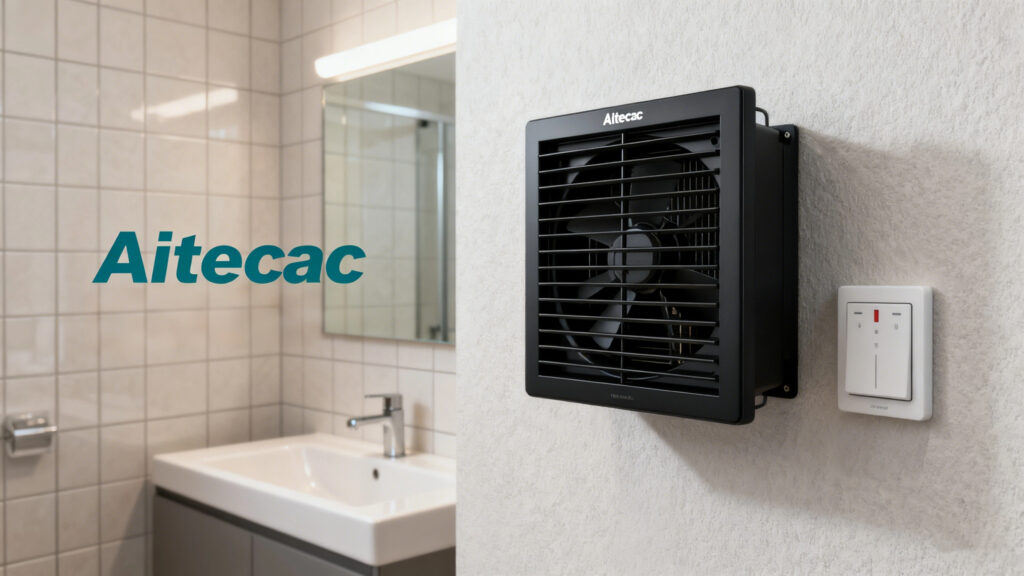
Conclusion
Winter mold prevention is not just about cleaning damp spots. It starts with balancing warmth and ventilation. Insulation keeps heat in, ventilation fans remove stale air and moisture. Together they create a healthy home environment. The risks of mold are too great to ignore. Prevention is the most effective solution, protecting both your property and your health. Products like the 576 CFM Shutter Exhaust Ventilation Fan make it easy to achieve this balance.
Want a mold free, energy efficient winter? Start with the right tools. Check out Aitecac’s basement solutions and get fans that give you warmth and fresh air. Your health, indoor comfort and savings depend on it.

